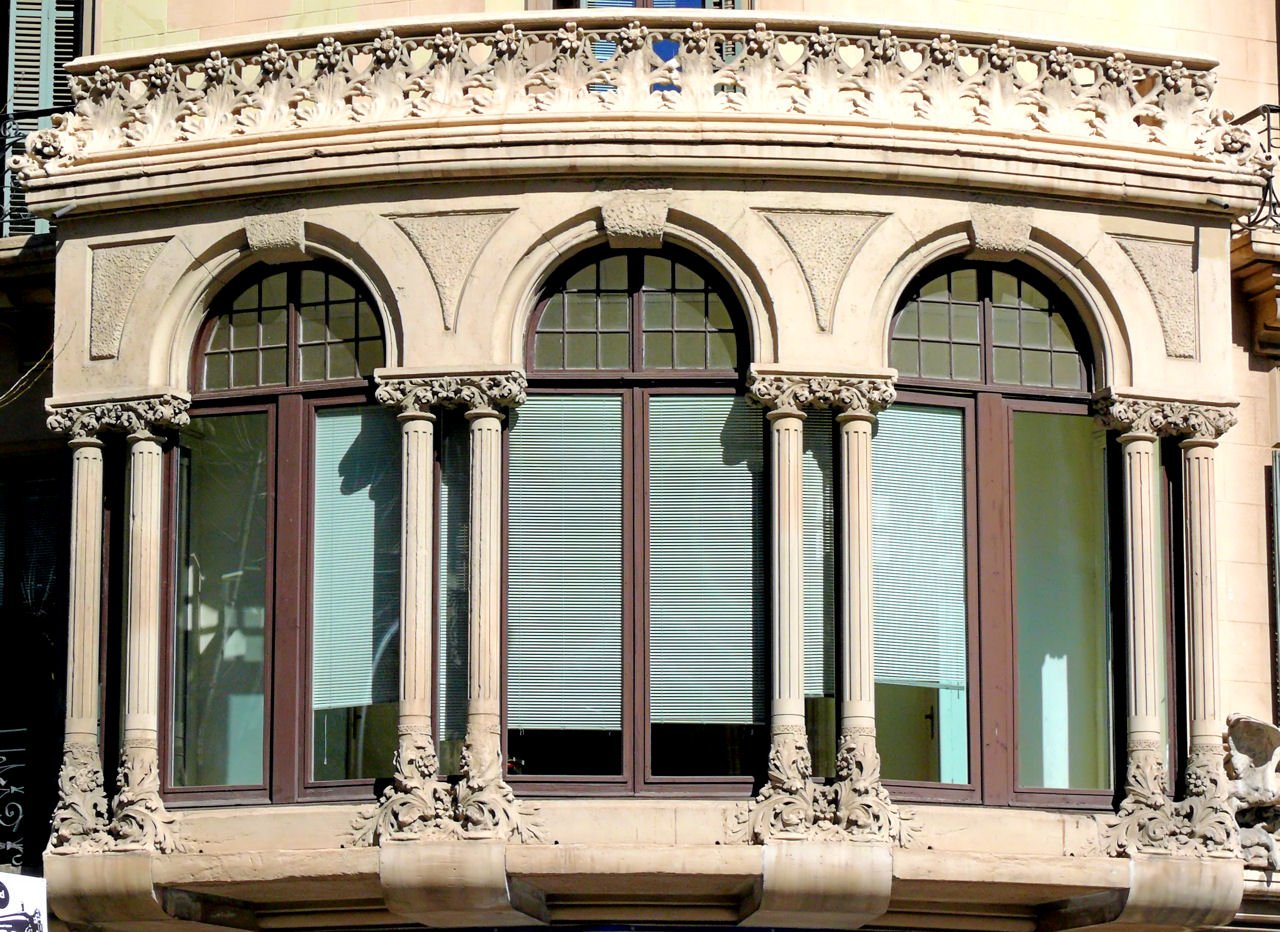#1231. Art Nouveau Bay Window Façade with Neoclassical Elements
The image showcases an exquisite fragment of a historic building façade, executed in a style that combines elements of Art Nouveau and Neoclassicism. The central compositional element is a curved bay window with three arched windows, creating a rhythmic architectural ensemble.
The windows are framed by decorative half-columns with richly adorned capitals, demonstrating fine stone carving and floral motifs. The fluted half-columns support the arched frames and represent a characteristic element of the classical order, adapted for a modern interpretation.
The upper part of the bay window is crowned with an elegant cornice featuring a delicate ornamental frieze consisting of repeating vegetal elements, reminiscent of stylized acanthus leaves. Particularly noteworthy is the craftsmanship of the stone carving, especially at the bases of the columns, where floral and possibly zoomorphic motifs are also present.
The color scheme of the façade is built on the contrast between the light sandstone of the main structure and the dark brown wooden window frames, which gives the composition depth and expressiveness. The window glass with horizontal blinds inside the room creates an interesting play of light and shadow.
This architectural element is an excellent example of urban aesthetics from the late 19th to early 20th century, when functionality was combined with decorative features, and historical motifs were reinterpreted in the context of new architectural trends.
